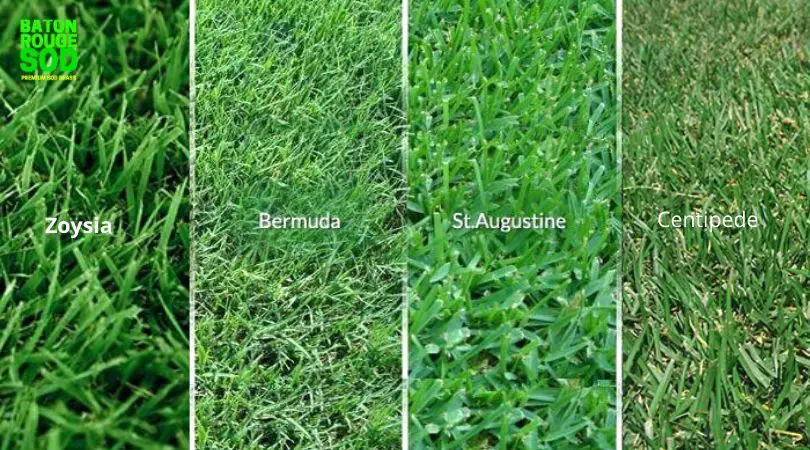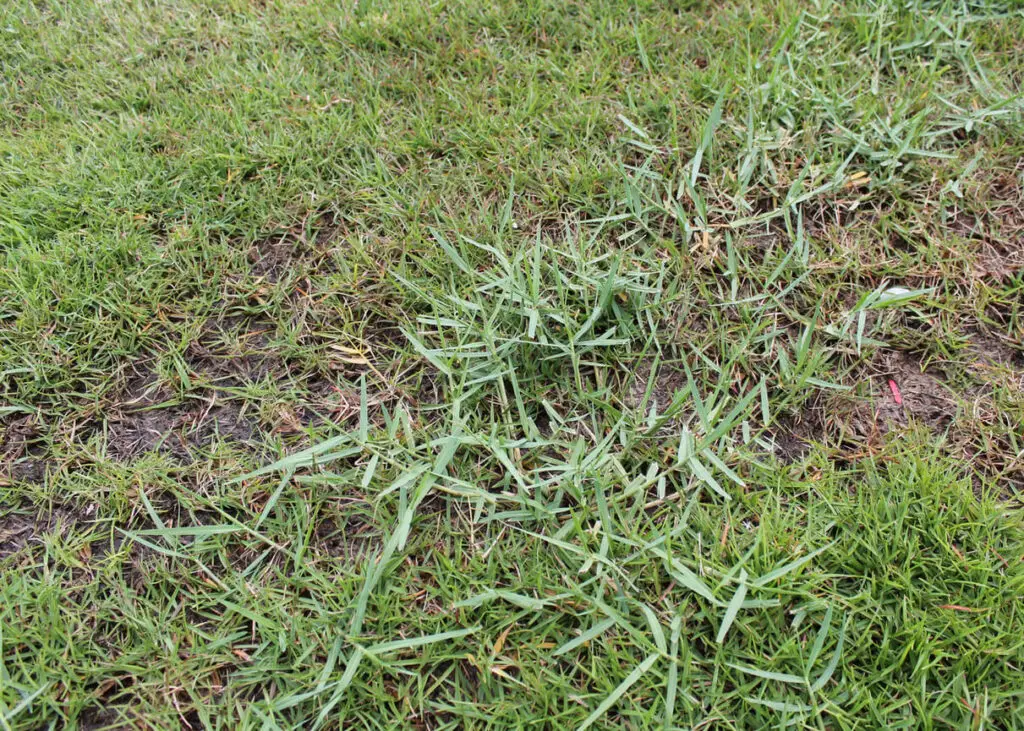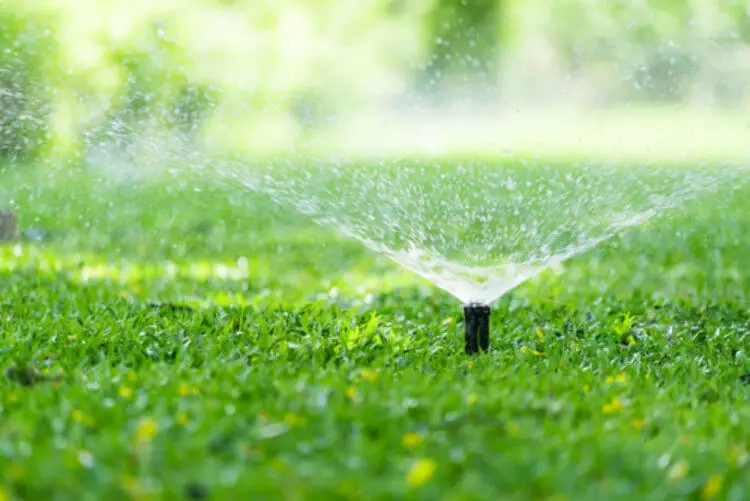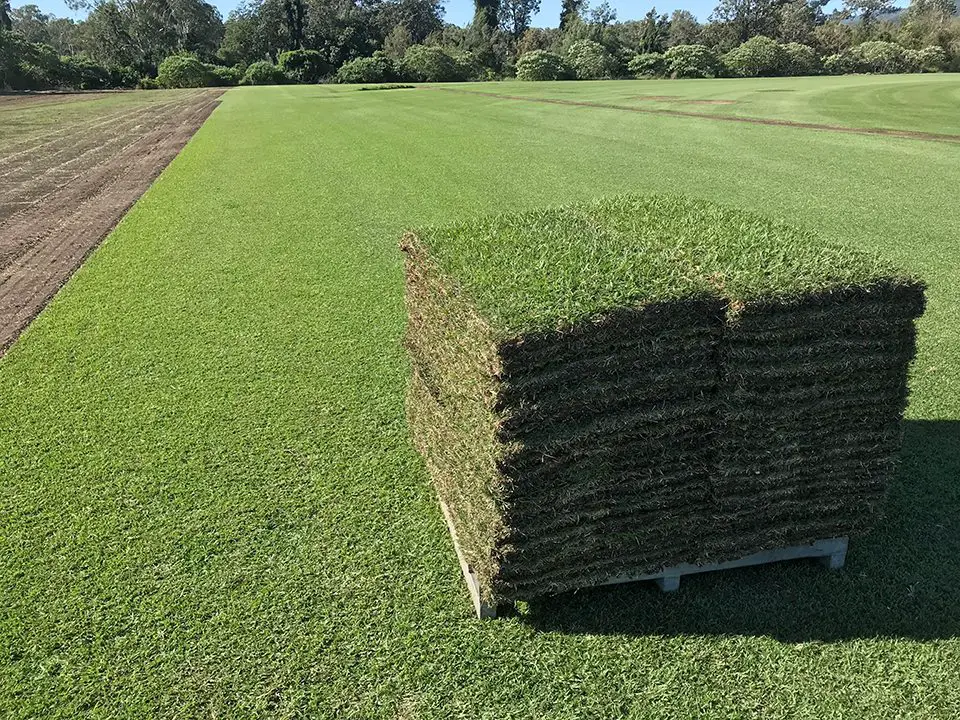You looked out at your lawn and noticed this bit tall weed growing.
After asking around and looking online you discovered you have dallisgrass.
Dallisgrass is a pesky weed that can be annoyingly difficult to control and an unsightly nuisance in lawn areas.
But with persistence and a good plan, there are several methods you can use to get rid of it.
Dallas grass thrives in moist, shady areas and spreads rapidly.
Once it invades, it can take over wide areas or an entire lawn and garden if not treated.
Dallisgrass Identification: What is Dallisgrass?
Identifying Dallisgrass

Dallisgrass is a perennial warm-season grassy weed that prolifically spreads and forms dense patches where it establishes.
This perennial weed is be found in many parts of the United States; but grows most in the southern part of the country.
It was introduced into the United States years and was used as forage on farms and ranches.
Since then dallas grass has spread state to state and become a nuisance in lawns..
Dallis grass thrives in moist environments and can often be found near waterways.
It spreads by seeds and rhizomes, making it hard to manage.
Dallisgrass flowers from late spring to early summer, and produces a grain-like seed head that can spread rapidly.
The weed has a grass-like appearance and a long blade-like leaf that can grow 12 inches in length.
The leaves are long and narrow, and the flowers are small and white.
What Is The Difference Between Dallisgrass and Crabgrass?
People often find it difficult to distinguishing between Dallisgrass and Crabgrass.
They are both grassy types of weeds; but grow significantly differently and have different origins.
Dallisgrass can be found in lawns throughout many parts of the United States.
It is often mistaken for crabgrass, but there are several distinguishing ways to identify it.
The most apparent differences between the two are the growth height and seed heads.
Dallisgrass seed heads are much larger and have a characteristic appearance.
The leaves are also wider and shorter than crabgrass leaves..

Crabgrass vs. Dallisgrass:
Is crabgrass and Dallisgrass the same?
The answer is no. They are different plants, but they share some physiological characteristics.
At first glance, crabgrass and Dallisgrass are both grassy weeds that visually look a lot alike.
However, there are significant differences between the two.
Dallisgrass is a perennial weed that grows in patches or dense stands.
Crabgrass is a winter annual weed that also grows in dense patches.
Dallas grass grows best in full sun and well-drained soils.
Crabgrass thrives in full sun to partial shade and moist soils.
Dallis grass
- It has large leaves, which can be up to 12 inches long and 1 inch wide, with a rough texture.
- It spreads by rhizomes, underground stems that spread horizontally and produce new plants.
- Its seed heads look like small cattails or bottlebrushes.
Crabgrass
- Is often used for erosion control or in a mixture with other grasses to create a lawn.
- It spreads by seeds, which can be carried long distances by the wind or water.
- Crabgrass also produces seed heads earlier in the season than dallisgrass and most other weeds.
Overall, both weeds have strikingly similar growth habits.
They can be difficult to get rid of because they reproduce quickly and spread easily through the soil by sending out roots from their stems as they grow.
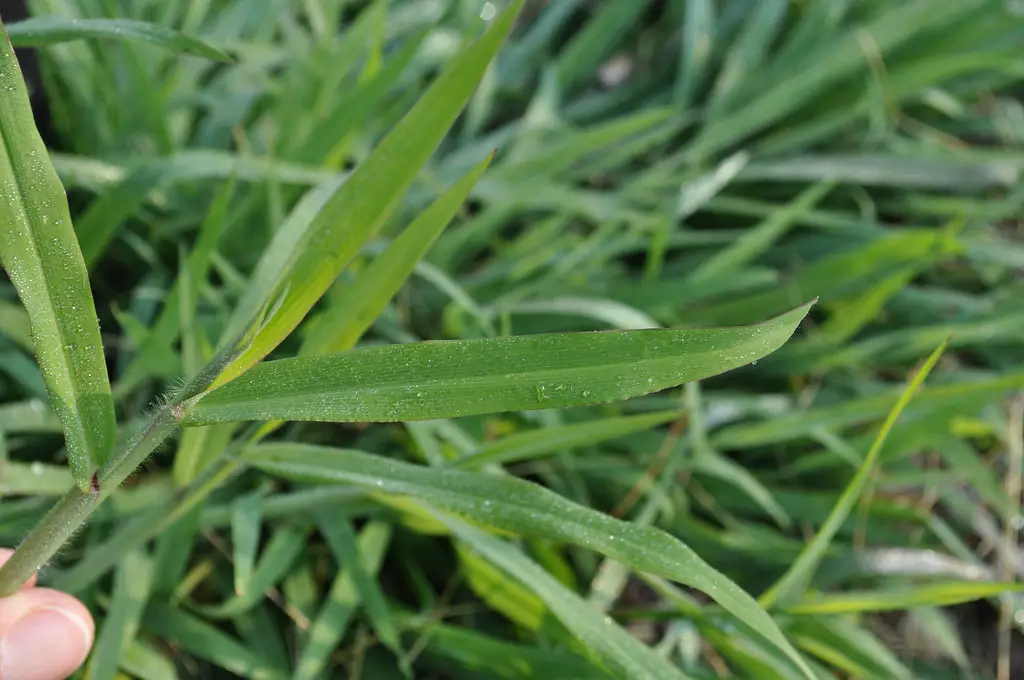
The Life Cycle of Dallisgrass
Dallisgrass has a life cycle of three stages: germination, vegetative growth, and flowering.
The life cycle can vary dramatically depending on the specific conditions it is growing in.
Generally speaking, dallisgrass goes through the following stages which include germination, vegetative growth, and flowering.
In the spring, Dallisgrass begins to emerge from underground rhizomes; which are horizontal stems that grow just below the surface of the soil.
As the weather warms up and the days become longer; the Dallis grass grows taller and produces leaves and flowers.
The flowers are small and inconspicuous; and are usually green or reddish in color.
They are produced in clusters at the top of the plant, which are pollinated by wind or insects.
After the flowers are pollinated, they produce seeds, which are then dispersed by the wind, birds, animals.
The seeds of Dallisgrass are small, dark, and have a hard, protective coating that allows them to survive in the soil for long periods of time.
In the fall, as the weather begins to cool down, Dallisgrass begins to go dormant and die back.
Its leaves and stems turn brown and dry out, and the plant goes dormant over the winter.
The next spring, the plant begins to grow again from its underground rhizomes, starting the cycle over again..
Does dallisgrass go dormant?
Yes, dallisgrass does go dormant.
It typically goes dormant in the late fall and stays dormant until early spring.
During the dormant period, the grass doesn’t grow or produce flowers.
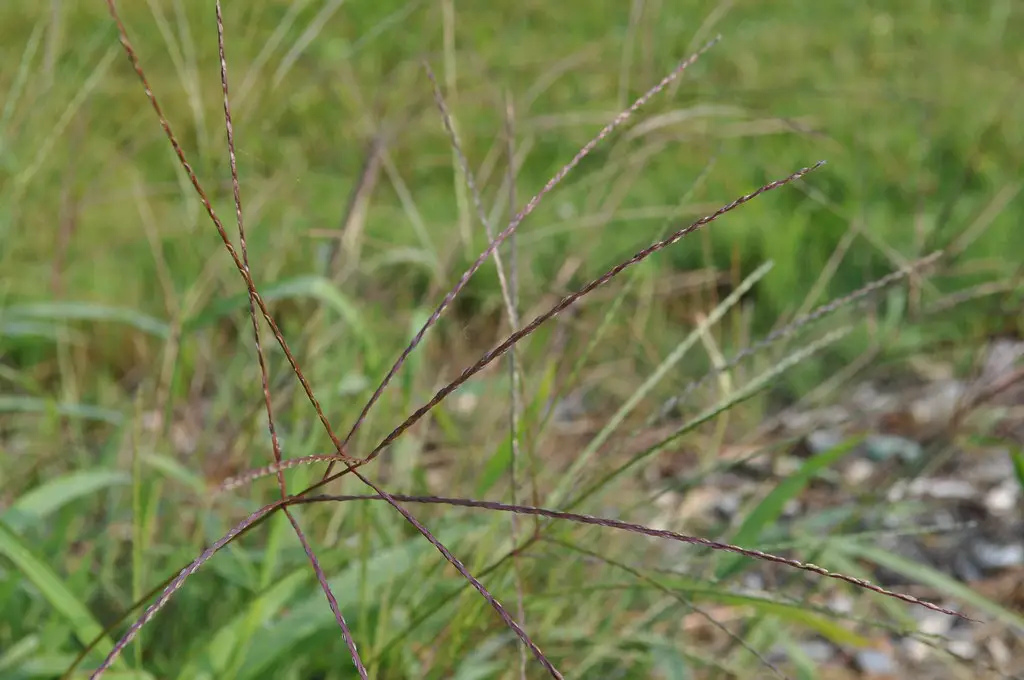
How to Control Dallisgrass
Dallisgrass can quickly spread and take over a lawn or garden if not managed properly.
Properly controlling invasive weeds like this requires the right combination of cultural, chemical, and physical controls.
Dallisgrass can be systematically controlled with herbicides; but using the correct herbicide and dosage is essential.
The next important task to control these weeds to mow properly and regularly..
Mowing at the correct setting will help curb the life cycle.
This will help reduce the staggering amount of seed production and keep the weed from spreading further.
You can prevent weed infestation from starting by applying pre-emergent herbicide at the right times.
The best time to apply pre-emergents is in early spring, fall, and late winter.
If you cannot treat your lawn turfgrass before the weeds germinate, use post-emergent herbicides to treat your turf.
Selective herbicides can eliminate the weed and not harm certain turfgrass species.
You can do the whole yard or do a spot treatment to the affected areas.
Dallisgrass Weed Control Methods
Dallisgrass weed control can be difficult, but with a bit of knowledge and effort, you can do it.
The most effective way to get rid of dallisgrass is to use a herbicide to treat it early before it becomes established.
The best control method is to prevent seeds from germinating and growing with pre emergents.
Use pre-emergent herbicide on weeds before they get the chance to grow.
Multiple applications may be necessary to eliminate all of the problems effectively.
Here are a few tips for controlling this tough weed.
1. Pull out the plants by hand when they are small. This is best done before they have a chance to set seed.
2. Mow the lawn regularly and keep it well-maintained. Use a good mower; do not mulch the weed back into the yard. This will help to keep it under control.
3.Apply herbicides such as glyphosate or 2,4-D. Be sure to read the label carefully and follow all safety instructions.
Can you kill dallisgrass without killing the grass?
Killing dallis grass without killing the grass nearby may be pretty difficult.
You can use treatment strategies to eliminate this grass in your lawn.
The most effective way to kill dallisgrass is by using glyphosate herbicide; however, this will also kill the grass growing nearby that is sprayed and leave bare spots.
when you notice the weed starts to regrow glyphosate can knock out dallisgrass in no time.
There are some other ways that you can try first before resorting to this more drastic measure.
How to Kill Dallisgrass
There are several ways eliminate dallisgrass.
Use a post-emergent herbicide like roundup to kill the established dallisgrass that is already present.
Be sure to read the labels of any herbicides you use, as they may vary in their effectiveness against the indicated species.

Dallisgrass Killer: What to use to kill dallisgrass
You can use several herbicides, but glyphosate is the most effective.
Non-selective herbicides kill any plant they come in contact with
The Dallisgrass Killer, a herbicide developed by UF scientists, shows promise in controlling the weed.
The herbicide has been tested on dallisgrass in both lawns and fields and has been shown to be effective in controlling the weed.
It is a combination of two herbicides, haloxyfop, and sethoxydim.
Apply these herbicides throughout your landscaping, especially in areas where dallisgrass grows and spread.
This weed killer comes in liquid form that is sprayed foliarly on the weeds.
After treatment, it kills the plants within days.
Herbicide for Dallisgrass
Some of the common herbicide chemicals used on dallas grass include msma, glyphosate aka roundup, 2,4-d.
There may be situations where dcpa, dithiopyr, oryzalin, bensulide, haloxyfop, and sethoxydim must be applied.
How do I get rid of dallisgrass naturally?
There are several ways you can get rid of dallisgrass naturally.
You can start by pulling out the plants.
Do this by grabbing the weed with a pair of garden or work gloves, and then yanking it out of the ground.
Use a tarp or bags to properly dispose of the entire plant.
Dallisgrass Removal
You can remove dallisgrass with a shovel, weed hoe, hand trowel, or any tool that can dig beneath the plant’s root system.

How to Dig up Dallisgrass:
With these simple steps, you can eradicate it from your lawn for good!
First, identify the weed. Dallisgrass grows in clumps and has long thin leaves. It can be easily confused with other grasses, so make sure you know what you’re looking for before digging.
Next, use a shovel or spade to dig up the weed’s roots. Be careful not to damage the surrounding grass in the process.
Finally, please dispose of the weed properly by putting it in a trash bag or burning it.
Can you kill dallisgrass with vinegar?
Yes, you can.
Spraying a mixture of vinegar and dish soap onto the plant will help you get rid of dallisgrass, as well as any other weeds or unwanted plants growing nearby.
One way is to use a weed killer made from vinegar and salt.
This weed killer is effective against dallisgrass and other weeds.
To make it:
- Mix 1 gallon of white vinegar with 1/4 cup of salt.
- Pour the mixture into a spray bottle and spray the weeds evenly.
- Avoid spraying the grass or plants you want to keep.

Boiling Water Dallisgrass Control
Boiling water can be an effective way to control dallisgrass in your lawn.
Boil a pot of water and pour it over the patches.
The hot water will kill the grass and help to prevent it from spreading.
Be sure to pour the hot water directly on the grass; and avoid spraying it on any plants or flowers that you want to keep.
Repeat this process every week or two until the remaining plants are gone.
Pouring Boiling Water on lawn weeds is an organic non-chemical way to kill the grassy weed.
You can also try using boiling water or salt water on the plant, which will eventually kill it off if you do this consistently enough over time.
Using Table Salt to Kill Dallisgrass
One easy way to kill dallisgrass is to use table salt.
You can either pour the salt directly on the weed, mix it with water or vinegar, and spray it on it.
Wet the area well so the salt will penetrate the plant’s roots.
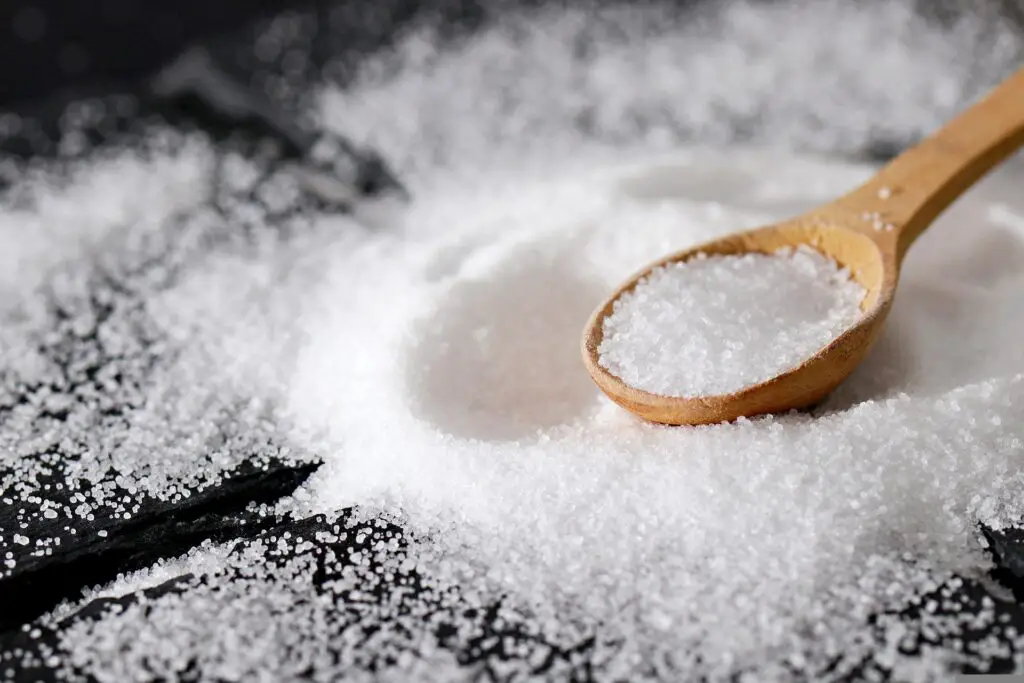
Dallisgrass Control in St Augustine, Zoysia, Centipede and Bermuda
it’s tricky to kill dallisgrass in warm-season grasses like St Augustine grass, Zoysia, and Centipede.
Bermuda sod
You can kill dallisgrass in a Bermuda lawn when the bermudagrass is dormant. Spray glyphosate across the turf where the infestation is.
Conclusion: How do you get rid of dallisgrass in your lawn?
We hope you did learn how to get rid of this invasive lawn pest.
You can do a few things to help get rid of dallisgrass in your lawn.
One thing you can do is use a weed killer.
Many types of weed killers are available, so be sure to choose one specifically for dallisgrass.
Apply the weed killer according to the instructions on the label.
Another thing you can do is mow your lawn regularly.
This will help keep the weeds from spreading.
Mow your property at the correct height, and don’t remove more than one-third of the blade at a time.
Finally, you can try using cultural controls. This includes things like watering your lawn correctly and using fertilizer properly.
More Lawn Care Tips
What Are Those Brown Spots In My Yard
How To Get Rid Of Torpedo Grass
How Many Square Feet In A Pallet Of Sod?


